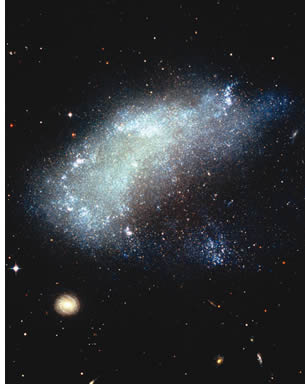The new Dunlap Institute for Astronomy and Astrophysics is just beginning to take shape in the minds of U of T astronomers, but already it represents a “tremendous opportunity” for the university to stay at the forefront of astronomical research in the decades ahead, says Peter Martin, the department chair.
The institute, made possible by the recent sale of the David Dunlap Observatory in Richmond Hill, Ontario, will foster research into the most fundamental questions in astronomy, including the formation of planetary systems, the structure and evolution of stars and galaxies, and the origin of the universe itself.
Academic work will focus on “signature projects” targeting specific, challenging questions about our cosmic habitat. One potential project will further the search for extrasolar planets – a subject that’s very much in the news these days. Scientists are getting closer to discovering planets outside the solar system that resemble Earth. In September, a team of U of T astronomers made history by unveiling the first-ever photograph of a planet orbiting a sun-like star. Another signature project will likely examine “first light” – the epoch in the early universe when star formation began.
One of the first tasks is to find a director for the institute; the position is now being advertised internationally. Additional faculty and staff will be brought on board in the years ahead, Martin says, with a push to recruit the brightest young grad students from around the world.
The astronomy field has changed considerably since the David Dunlap Observatory opened in 1935. Breakthroughs today typically require enormous budgets and multinational collaborations. U of T already contributes to many of these projects, including the Gemini telescopes in Hawaii and Chile as well as the James Webb Space Telescope, which will succeed the Hubble Space Telescope. As the Dunlap Institute takes shape, Martin says that the question that needs answering is: How can U of T make the greatest contribution? The answer, he suggests, will evolve through: “innovative ideas and the hard work of individual researchers.”
Recent Posts
Safety First
AI has developed faster than anyone thought. Will it serve humanity’s best interests?
AI Learns Everything It Knows from Humans. Will Humans also Learn from AI?
The short answer: it depends
Healing Power
Why AI could be good news for both patients and our health-care system





